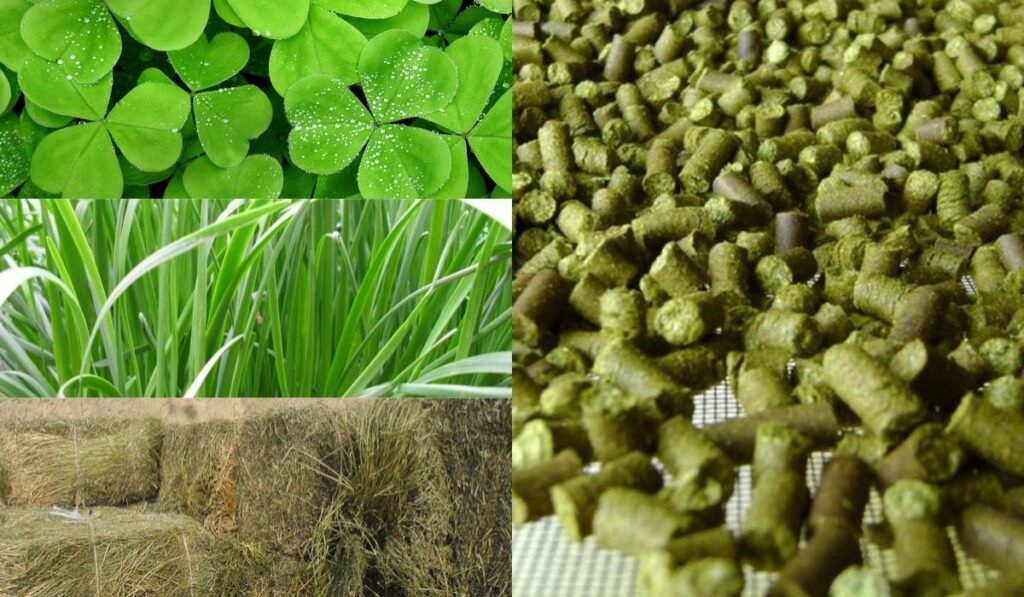Grass pellet machines are essential in converting grass and other biomass materials into high-density pellets, which can be used for energy production, animal feed, and other applications. When considering the purchase of a grass pellet machine, potential buyers often face the choice between mobile and stationary models. Each type comes with its own set of advantages and disadvantages, particularly regarding costs. This article explores the cost differences between mobile and stationary grass pellet machines, helping buyers make informed decisions based on their specific needs and circumstances.
1. Initial Purchase Cost
One of the most significant factors influencing the overall cost of a grass pellet machine is the initial purchase price.
- Stationary grass pellet making machines: Generally, stationary models tend to have a higher upfront cost due to their larger size, more robust construction, and higher production capacities. Prices can range from $20,000 to $60,000, depending on the specifications and features of the machine. These machines are designed for high-volume production and are often built to last, which contributes to their higher initial cost.
- Mobile Grass Pellet Machines: Mobile machines are typically less expensive than their stationary counterparts, with prices ranging from $15,000 to $40,000. The lower cost is partly due to their smaller size and simpler design. However, mobile machines may have lower production capacities, which can affect long-term profitability.
2. Installation Costs
Installation costs can vary significantly between mobile and stationary grass pellet machines.
- Stationary Machines: Installing a stationary pellet machine often requires site preparation, including concrete foundations, electrical work, and possibly additional infrastructure to support the machine’s operation. These costs can add several thousand dollars to the overall investment.
- Mobile Machines: Mobile pellet machines are generally easier and less expensive to install. They are designed to be towed or transported to various locations, requiring minimal setup. This portability can save costs associated with site preparation and installation.

3. Operating Costs
Operating costs include expenses related to running the pellet machine, such as raw materials, energy consumption, and labor.
- Raw Material Costs: Both mobile and stationary machines process grass and other biomass materials, so raw material costs will be similar. However, mobile machines may have the advantage of being able to source materials closer to the production site, potentially reducing transportation costs.
- Energy Costs: Energy consumption can vary based on the efficiency of the machine and the power source used. Mobile machines may rely on diesel generators or batteries, which can be more expensive than grid electricity. Stationary machines, when connected to the grid, may benefit from lower energy costs, especially if they can take advantage of off-peak rates.
- Labor Costs: The labor costs associated with operating the machines can differ. Stationary machines may require a larger workforce for continuous operation, while mobile machines can often be operated with fewer personnel, especially if they are designed for ease of use.
4. Maintenance Costs
Regular maintenance is essential for ensuring the longevity and efficiency of both mobile and stationary grass pellet machines.
- Stationary Machines: Due to their larger size and complexity, stationary machines may have higher maintenance costs. Components such as the die, rollers, and gearbox may require more frequent inspections and replacements, leading to increased labor and parts costs.
- Mobile Machines: Mobile machines may have lower maintenance costs due to their simpler design. However, they are subject to wear and tear from transportation, which can lead to unique maintenance challenges. Regular checks on the mobility components, such as tires and towing mechanisms, are necessary to ensure safe operation.
5. Downtime Costs
Downtime can significantly impact the overall cost of operating a grass pellet machine.
- Stationary Machines: If a stationary machine experiences a breakdown, the downtime can lead to substantial production losses, especially if the machine is a primary production source. The cost of lost production can quickly add up, particularly during peak demand periods.
- Mobile Machines: While mobile machines can also experience downtime, their ability to relocate to different sites can mitigate some of the impacts. If one location runs out of feedstock, the machine can be moved to another area with available materials, potentially reducing downtime and maintaining production levels.
6. Opportunity Costs
Opportunity costs refer to the potential benefits lost when choosing one option over another.
- Stationary Machines: Investing in a stationary machine may tie up capital in a single location, which could limit flexibility in responding to changing market demands. However, stationary machines can produce higher volumes, which may lead to better economies of scale.
- Mobile Machines: Mobile machines offer greater flexibility, allowing producers to take advantage of various feedstock sources and market opportunities. This adaptability can lead to increased production and revenue potential, offsetting the lower production capacity of mobile units. (Related post: hay pellet mill for sale)
7. Conclusion
When considering the costs associated with mobile and stationary grass pellet machines, it is essential to evaluate various factors, including initial purchase costs, installation expenses, operating costs, maintenance costs, downtime, and opportunity costs.Stationary machines generally have higher upfront and maintenance costs but offer greater production capacities and efficiencies when connected to the grid. In contrast, mobile machines are often more affordable and flexible, allowing for adaptability in sourcing materials and responding to market demands, but may incur higher energy costs and face unique maintenance challenges.Ultimately, the choice between a mobile and stationary grass pellet machine should be based on the specific needs and circumstances of the business, including production goals, available resources, and market conditions. By carefully evaluating these factors, businesses can make informed decisions that align with their operational goals and contribute to the sustainable production of biomass pellets.


